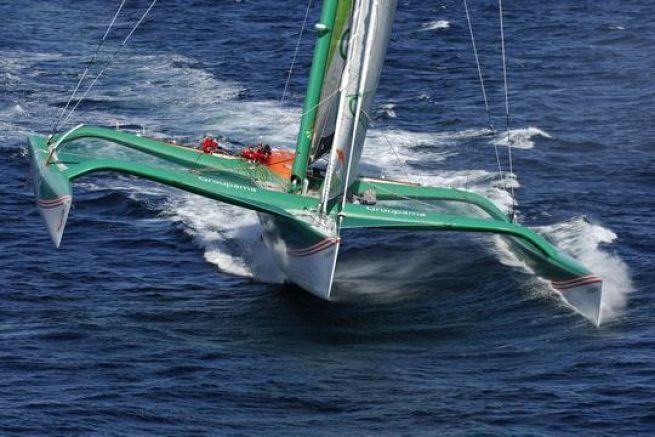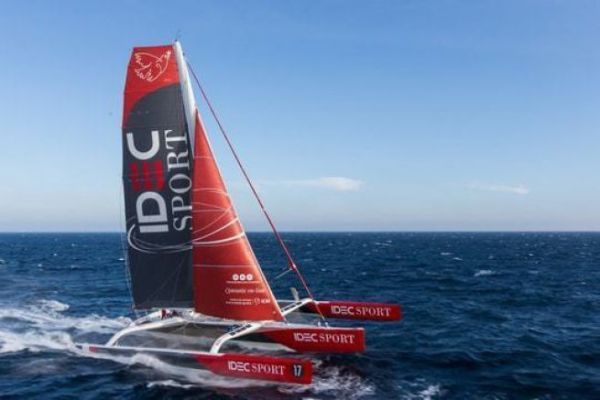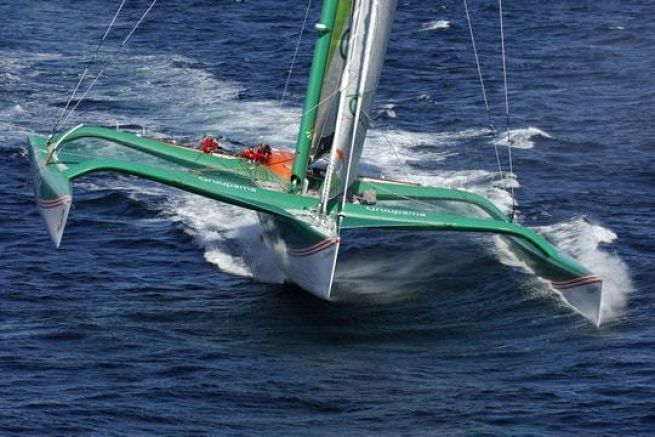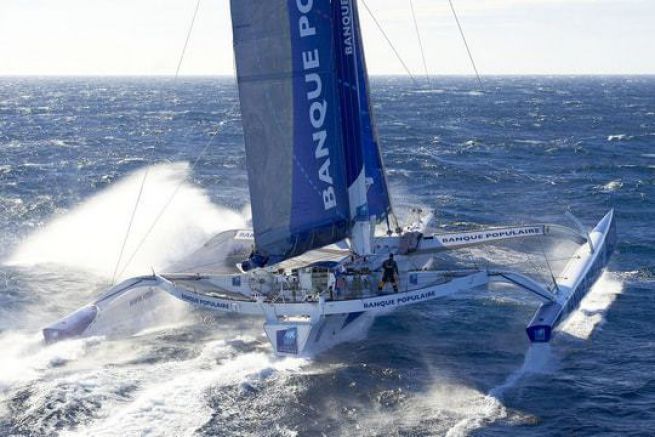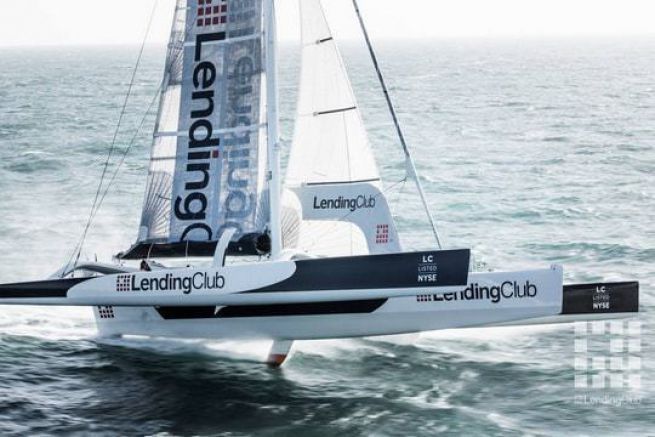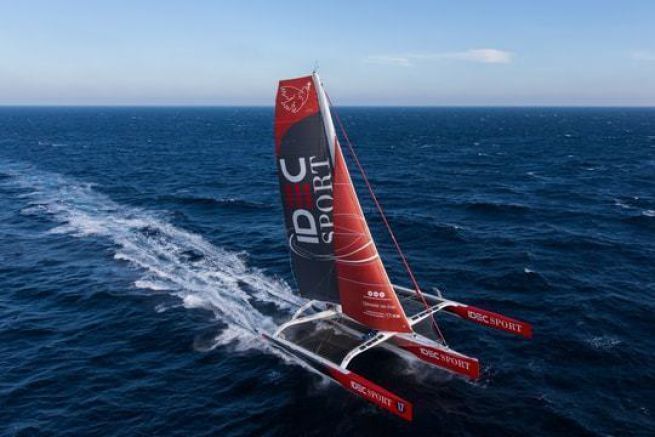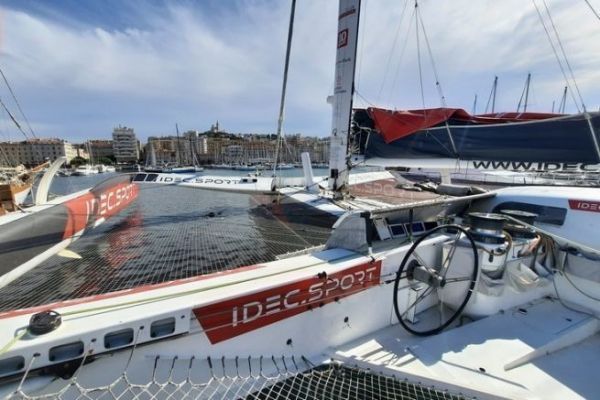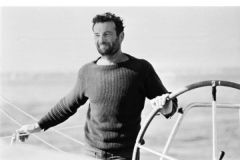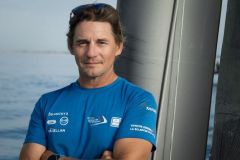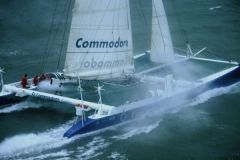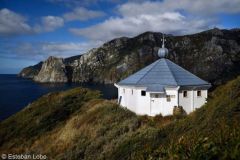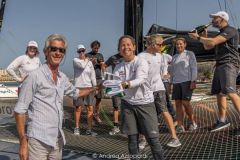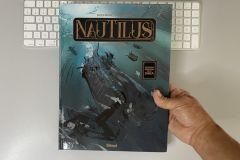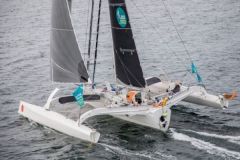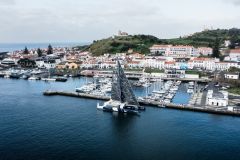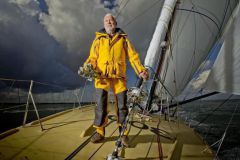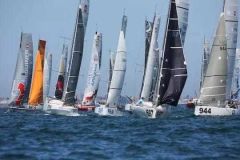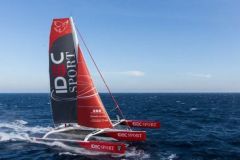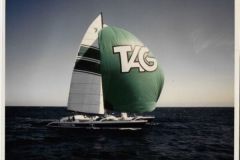A maxi-trimaran, a real technological and sporting challenge
In 2004, Groupama announced the construction of a giant trimaran for Franck Cammas, designed for ocean record attempts. In his sights, the Jules Verne Trophy. While at the time, armament was in full swing, Groupama wanted to build a boat of reasonable size, the smallest trimaran capable of beating Orange II (Bruno Peyron won the Jules Verne Trophy on board in 2005).
The architects Marc Van Peteghem and Vincent Lauriot-Prévost designed Groupama 3, with a length of 105 feet (31.50 m). Construction began in 2005 at the Multiplast yard in Vannes. After nearly 130,000 hours of work, the boat was launched on 7 June 2006.

During the presentation of the project, Franck Cammas described it as "a trimaran of medium power, light, but still long enough to be safe in the southern seas. The power is obtained by its width while the lightness is the result of an optimization of the structure, a rationalization of the equipment and layout as well as a careful construction."
The concept of Groupama 3 is inspired more by the 60-foot Orma trimarans, and particularly its "little brother" Groupama 2, than by the previous giants, which were heavier and designed to tackle the Deep South. Orange II (36.80 m) is formidable in heavy seas, but struggles in light airs and moderate breezes.
"A shorter boat, but more manageable, because in the record program, there is certainly the Jules Verne Trophy, but also other records and one day there will be races. It is clear that in this case, the option of having a fairly versatile boat was more interesting" says Vincent Lauriot Pévost.
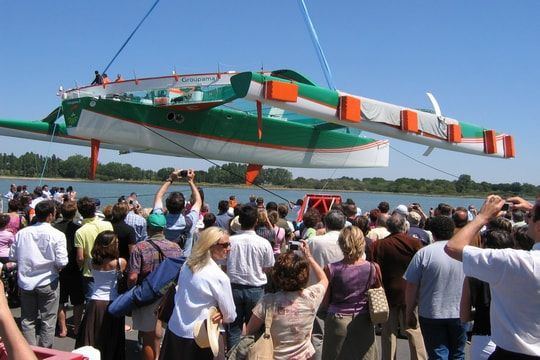
Groupama 3 is more versatile: she goes almost as fast in heavy weather while being more at ease in lighter conditions. Finally, the trimaran is the first large Multi to be equipped with foils to sail around the world. This concept was previously used on the Orma, but only on the Atlantic.
Vincent Lauriot-Prévost, one of the designers of Franck Cammas' trimaran within the VPLP architectural firm, explains the approach that prevailed in imagining Groupama 3: "The priority was to design a multihull that could be handled by a crew of ten people and therefore not to follow the logic of the length that was in force: Groupama 3 is therefore not a maxi multihull! It's a trimaran which is also strongly inspired by Groupama 2, the 60-foot Orma: with the adoption of foils and the installation of three rudders, with its open and wide cockpit, with a proportionally moderate sail plan. So we opted for a relatively small boat, rather light, evolutive and very reactive. The deck layout allows the crew to maneuver quickly to adapt the sails to changing conditions in order to constantly exploit the trimaran's potential.
As the record program included the Jules Verne Trophy, we had to take into account the "southern seas" parameter: the foils are very far forward to pitch the boat up, the freeboard is important to avoid bogging down, and the height of the mast limits the changes in trim. The balance under sail is much more secure than on a 60-foot Orma..."
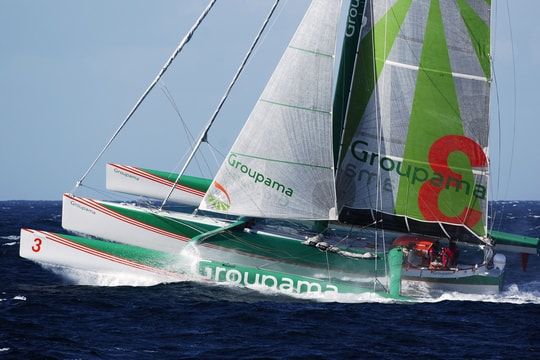
Groupama 3 is light, but with a moderate amount of canvas, an open cockpit and a very airy deck layout, with sober, even Spartan interior fittings. Franck Cammas' new boat stands out in relation to the reference catamaran.
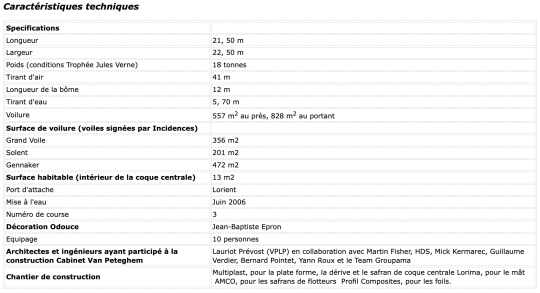
Records before the Jules Verne Trophy
Before tackling the Jules Verne Trophy, Franck Cammas and his crew are carrying out a record campaign on the Atlantic, and have achieved a number of successes: the Discovery Route (Cadiz-San Salvador) in May 2007, Miami-New York in June 2007, the North Atlantic and 24-hour record in July 2007.
Her records have strengthened Groupama 3 in her quest for the Jules Verne Trophy. Thus, on 24 January 2008, the trimaran set off on her first attempt. But on February 18, she capsized off New Zealand due to a broken float, while she was a day ahead of Orange II's reference time.
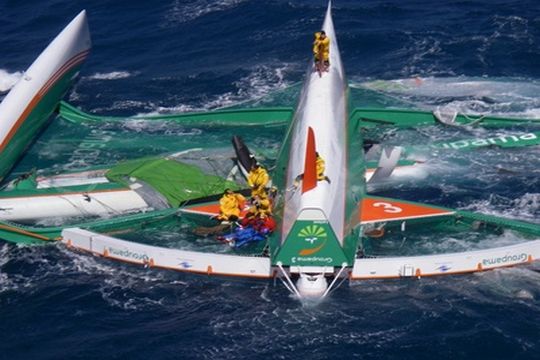
The crew was rescued and the boat was towed back to France. The damage was extensive and a major refit enabled Groupama 3 to be rebuilt identically, using the same moulds. Except for the floats, which were redesigned and rebuilt.
On 5th November 2009, the trimaran made a second attempt, but structural damage (rupture of the link between the rear arm and the port float) off South Africa dashed the hopes of Cammas and his crew.
Record on the Jules Verne Trophy
On 31st January 2010, Groupama 3 is once again setting out to attack the Jules Verne Trophy. Just a few days before the official end of the stand-by period, Groupama 3 is casting off for a new attempt, which promises to be tricky due to the far from ideal weather. Long behind the reference time set by Orange II in 2005 (50 days 16 hours 20 minutes and 4 seconds), Groupama 3 beat the Jules Verne Trophy record thanks to an incredible finish between the second equator crossing and the finish. On 20th March 2010, Franck Cammas and his crew set a new record in 48 days 7 hours 44 minutes and 52 seconds. They become the seventh holders of the Jules Verne Trophy, inaugurated in 1993.
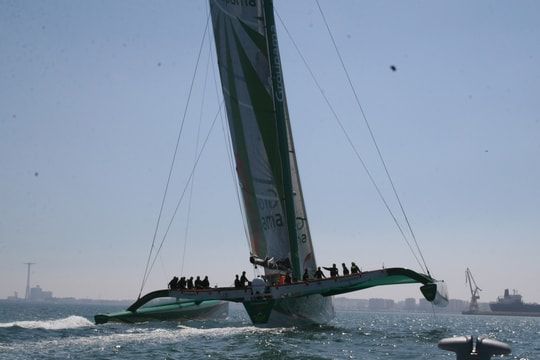
Technical characteristics of the boat for the Route du Rhum
- Height of the mast : 33,5 m
- Sail area: 411 m2 upwind, 678 m2 downwind
- Equipment : Possibility to operate some winches by pedaling
- Crewman : 1
Cammas and the Route du Rhum
In 2010, Franck Cammas took up the challenge of winning the Route du Rhum, alone on his 31.50 m trimaran. Modifications are therefore made for single-handed sailing. For the occasion, the boat was lightened (2 tons less, going from 18 to 16 tons), the mast shortened, the deck plan reviewed, and a bicycle frame was installed in the cockpit to balance the efforts to take a reef or trim the sails, between the upper and lower body. He won in Pointe-à-Pitre in 9 days 3 hours 14 minutes 47 seconds, ahead of Francis Joyon and Thomas Coville.
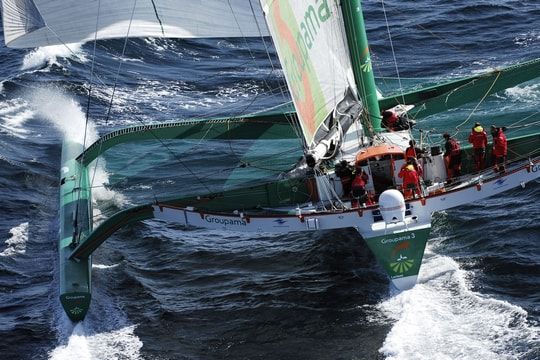
The Groupama 3 prize list
2006: Discovery Route record 7 d 10 h 58 min
2006: Miami/New York record 1 d 11 h 5 min
2007: North Atlantic Crossing Record 4 d 3 h 57 min 44 s
2007 : Record for the distance covered in 24 hours 794 miles at 33.08 knots
2008: Retired in the Jules Verne Trophy after capsizing
2010: Record for crossing the Mediterranean Sea 17 h 8 min 23 s
2010: Jules Verne Trophy record in 48 d 7 h 44 min 52 s
2010 : 1st in the Route du Rhum
Photo credits: Yvan Zedda
